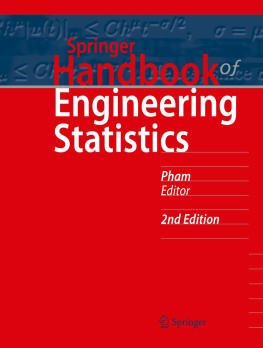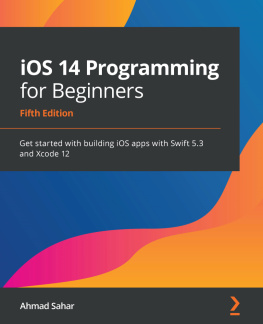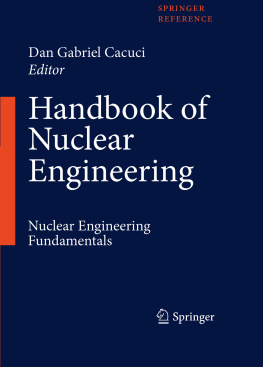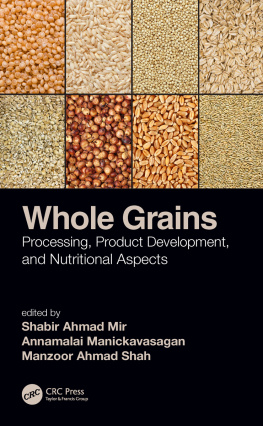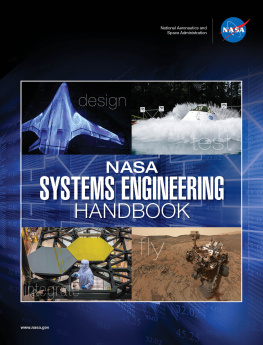Ahmad - Handbook of Optomechanical Engineering
Here you can read online Ahmad - Handbook of Optomechanical Engineering full text of the book (entire story) in english for free. Download pdf and epub, get meaning, cover and reviews about this ebook. City: London, year: 2017, publisher: CRC Press, genre: Romance novel. Description of the work, (preface) as well as reviews are available. Best literature library LitArk.com created for fans of good reading and offers a wide selection of genres:
Romance novel
Science fiction
Adventure
Detective
Science
History
Home and family
Prose
Art
Politics
Computer
Non-fiction
Religion
Business
Children
Humor
Choose a favorite category and find really read worthwhile books. Enjoy immersion in the world of imagination, feel the emotions of the characters or learn something new for yourself, make an fascinating discovery.
- Book:Handbook of Optomechanical Engineering
- Author:
- Publisher:CRC Press
- Genre:
- Year:2017
- City:London
- Rating:4 / 5
- Favourites:Add to favourites
- Your mark:
- 80
- 1
- 2
- 3
- 4
- 5
Handbook of Optomechanical Engineering: summary, description and annotation
We offer to read an annotation, description, summary or preface (depends on what the author of the book "Handbook of Optomechanical Engineering" wrote himself). If you haven't found the necessary information about the book — write in the comments, we will try to find it.
Ahmad: author's other books
Who wrote Handbook of Optomechanical Engineering? Find out the surname, the name of the author of the book and a list of all author's works by series.
Handbook of Optomechanical Engineering — read online for free the complete book (whole text) full work
Below is the text of the book, divided by pages. System saving the place of the last page read, allows you to conveniently read the book "Handbook of Optomechanical Engineering" online for free, without having to search again every time where you left off. Put a bookmark, and you can go to the page where you finished reading at any time.
Font size:
Interval:
Bookmark:


MATLAB is a trademark of The MathWorks, Inc. and is used with permission. The MathWorks does not warrant the accuracy of the text or exercises in this book. This books use or discussion of MATLAB software or related products does not constitute endorsement or sponsorship by The MathWorks of a particular pedagogical approach or particular use of the MATLAB software.
CRC Press
Taylor & Francis Group
6000 Broken Sound Parkway NW, Suite 300
Boca Raton, FL 33487-2742
2017 by Taylor & Francis Group, LLC
CRC Press is an imprint of Taylor & Francis Group, an Informa business
No claim to original U.S. Government works
Printed on acid-free paper
International Standard Book Number-13: 978-1-3516-4927-8 (ePub)
International Standard Book Number-13: 978-1-4987-6148-2 (Hardback)
This book contains information obtained from authentic and highly regarded sources. Reasonable efforts have been made to publish reliable data and information, but the author and publisher cannot assume responsibility for the validity of all materials or the consequences of their use. The authors and publishers have attempted to trace the copyright holders of all material reproduced in this publication and apologize to copyright holders if permission to publish in this form has not been obtained. If any copyright material has not been acknowledged please write and let us know so we may rectify in any future reprint.
Except as permitted under U.S. Copyright Law, no part of this book may be reprinted, reproduced, transmitted, or utilized in any form by any electronic, mechanical, or other means, now known or hereafter invented, including photocopying, microfilming, and recording, or in any information storage or retrieval system, without written permission from the publishers.
For permission to photocopy or use material electronically from this work, please access www.copyright.com (http://www.copyright.com/) or contact the Copyright Clearance Center, Inc. (CCC), 222 Rosewood Drive, Danvers, MA 01923, 978-750-8400. CCC is a not-for-profit organization that provides licenses and registration for a variety of users. For organizations that have been granted a photocopy license by the CCC, a separate system of payment has been arranged.
Trademark Notice: Product or corporate names may be trademarks or registered trademarks, and are used only for identification and explanation without intent to infringe.
Visit the Taylor & Francis Web site at
http://www.taylorandfrancis.com
and the CRC Press Web site at
http://www.crcpress.com
In Memory of
The late Paul R. Yoder Jr. who was a great mentor and an outstanding teacher and who introduced me to the art and science of Optomechanical Engineering at Perkin Elmer Corporation, Danbury, Connecticut in 1980.
Dedication
This book would not have been possible without the strong encouragement and full support of my lovely wife Rukhsana and my two very dear daughters Iram and Rabia. They have always been a true source of inspiration for all my professional accomplishments and humble contributions to the practice of Optomechanical Engineering.
Optomechanical engineering is essential for the design of optical systems used in everyday life. There are many textbooks on optics and many textbooks on mechanical engineering, but few textbooks on the combination of optics and mechanics, and there are few universities that teach courses on optomechanical design. Unfortunately, it is impossible to design and build a high-quality optical system, whether it be a camera assembly for a smart phone, the James Webb Space telescope, the optical system for a military system, or the cameras for planetary exploratory missions, without truly understanding the relationship between the optics and the mechanics.
To build a high-quality optical system, it is important to understand the properties of the materials used to make the optics, whether it is glass, metal, plastic, low-expansion material, or material for lightweight optics. Thermal and structural analyses of the optics are extremely important. Mounts for holding the optics to within the required tolerances without distorting the optics are essential. The design of flexures used to control the location of the optical elements is very important. Understanding analytic methods for predicting changes in the position, orientation, and size of an image is important. So how do we learn both the necessary optical design and the necessary mechanical design to design and build a high-quality optomechanical system?
Most optomechanical engineers start their career by getting a good technical background in optics or mechanical engineering, and then through on-the-job training, they become high-quality optomechanical engineers. They learn from colleagues; they learn by making mistakes; and most importantly, they learn from books such as this handbook on optomechanical engineering that can tremendously help in giving the optical or mechanical engineers the information they need to design a good optomechanical system. This handbook covers all key optomechanical engineering topics such as International Organization for Standardization standards, material selection criteria, tolerancing, design of lens and mirror mounts and adjustment mechanisms, fabrication and heat treatment methods for long-term stability, etc. All chapters have been authored by the subject matter experts with highly successful track records of developing sophisticated optical systems for space, military, and medical applications.
James C. Wyant
Professor Emeritus of Optical Sciences
Founding Dean of the College of Optical Sciences
University of Arizona
SPIE Past President
OSA Past President
The discipline of optomechanical engineering continues to play a key role in the design and development of sophisticated optical systems for space, military, and commercial applications. Such systems include the James Webb telescope, high-resolution cameras for Mars rovers and other planetary missions; seekers and sensors for ballistic missile interceptors; and laser systems for surgical and cosmetic procedures such as hair and tattoo removal.
This second edition of Handbook of Optomechanical Engineering is the result of collaboration of many subject-matter experts from top optical engineering organizations across the United States and Canada. We have attempted to cover the latest optomechanical engineering knowledge, practice, and art that has been developed over the last 15 years at the leading optical engineering organizations across the world. All original chapters in the first editions have been extensively updated in this second edition. Moreover, four new chapters have been added in this edition: plastic optics (). Plastic optics are increasingly being used in commercial and military applications. The chapter on plastic optics covers the materials, fabrication, and optomechanical design aspects of refractive and diffractive optical elements.
The new chapter on optomechanical tolerancing and error budgets addresses the important topic of tolerancing of optical elements and mechanical components. This chapter describes the tolerancing process and methods to consolidate optical and optomechanical tolerance analyses and covers the interaction between lenses and mounts in terms of manufacturing errors. Also described is the optomechanical statistical tolerancing method and guidelines to efficiently allocate tolerances for achieving the desired performance requirements while minimizing the manufacturing costs.
Font size:
Interval:
Bookmark:
Similar books «Handbook of Optomechanical Engineering»
Look at similar books to Handbook of Optomechanical Engineering. We have selected literature similar in name and meaning in the hope of providing readers with more options to find new, interesting, not yet read works.
Discussion, reviews of the book Handbook of Optomechanical Engineering and just readers' own opinions. Leave your comments, write what you think about the work, its meaning or the main characters. Specify what exactly you liked and what you didn't like, and why you think so.




